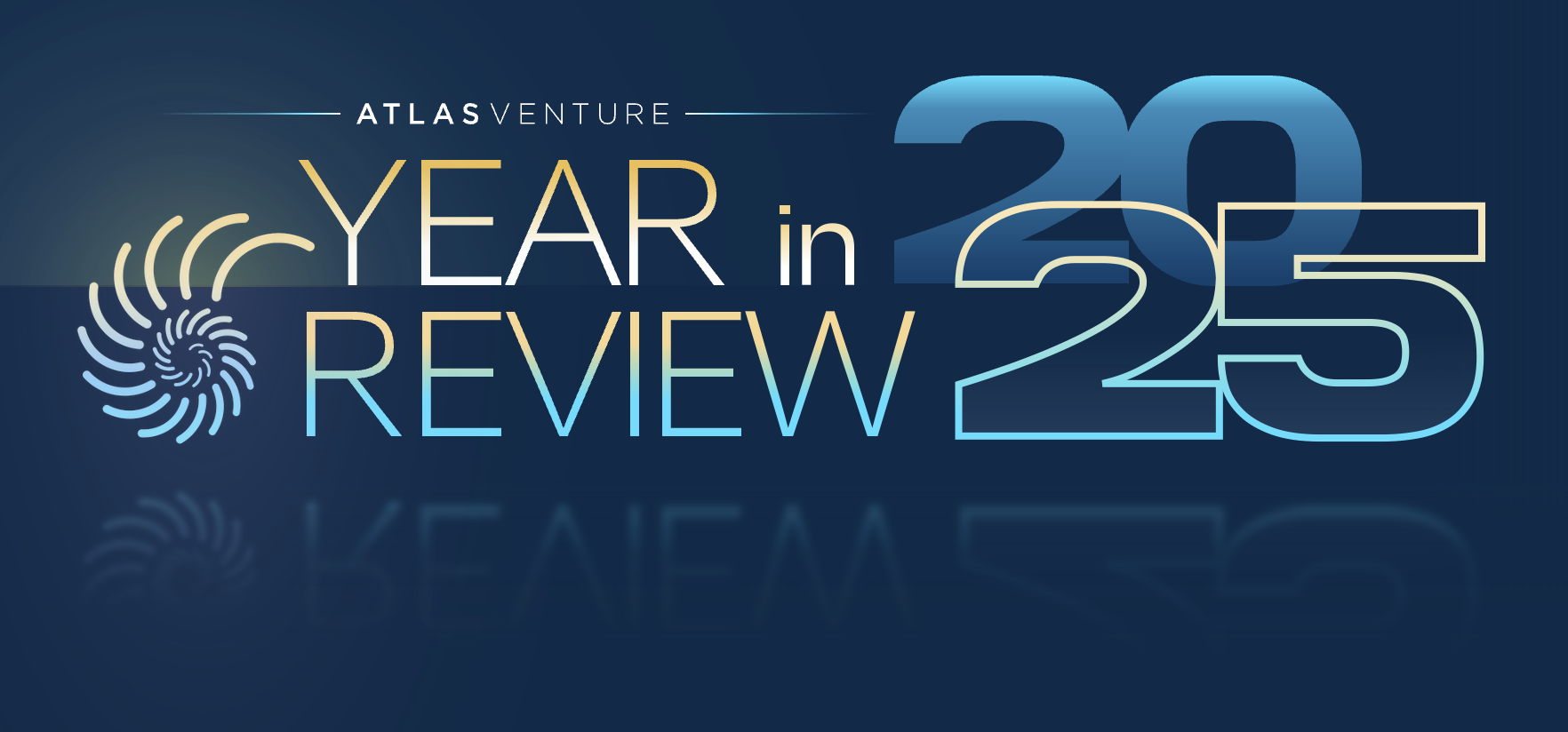Atlas Venture 2025 Year In Review
This year has truly been a rollercoaster! The markets started off with optimism, but then collapsed into the spring, only to rebound with enthusiasm in recent months. The cadence of M&A has picked up, creating a tailwind for the sector. But we’ve also been awash in chaos from macro and policy changes, creating uncertainty for investors and operators; hopefully these macro risks continue to fade. Recent years’ themes have only accelerated – the rise of Chinese innovation, the ubiquity of AI as a force for transformation, and the enormous opportunity in addressing obesity.
It’s been a hard one to pin down for our “Year In Review” – but we gave it a shot. In the past month, we’ve held our 2025 Atlas Venture Retreat with industry leaders and our Annual General Meeting for our Limited Partners (our investors). It was a privilege to once again kick off each of these meetings.
Here’s the link to this year’s presentation: Atlas’ 2025 Year In Review.
As I’ve noted in past years, listening at 1.25x+ speed is definitely recommended, and moves through the nearly 50-minute presentation slightly faster.
For those interested, here’s a library of past Year In Review presentations (2024, 2023, 2022, 2021, 2020, 2019, 2018).
Special thanks again this year to my Atlas colleagues Aimee Raleigh and Kristen Margeson, who were instrumental in helping me pull it together, and to Edward Goin, our graphic designer.
I’d also like to thank all of our friends in the industry who helped provide data supporting this talk, including BCG, Cambridge Associates, Cantor, Centerview, Citi, Cowen, Evercore, Goldman Sachs, IQVIA, Jefferies, JP Morgan, Leerink, LEK, McKinsey, Morgan Stanley, Pitchbook, Radford, Raymond James, SVB, Stifel, and others (listed in alphabetical order).






